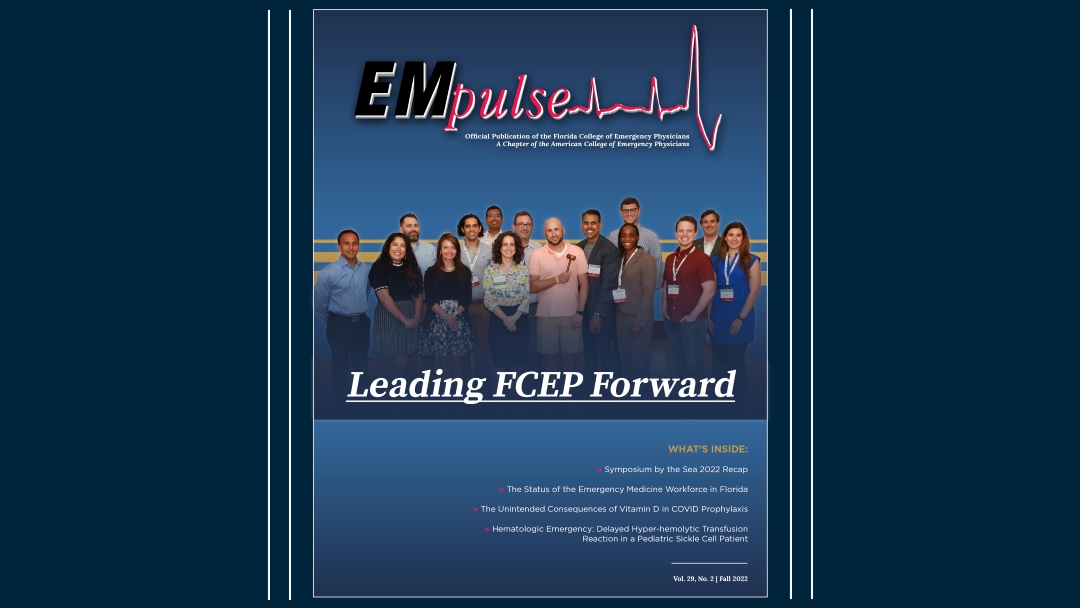Poison Control Fall 2022: The Use of Fomepizole as an Adjunct Therapy in Massive Acetaminophen Overdose
There is currently no standard definition of a massive acetaminophen (APAP) ingestion; however, based on current literature, the most commonly listed include an ingestion of >30g, a serum APAP level ≥ 300mcg/mL at any time, or a multiplication product (serum APAP x ALT) of ≥ 10,000. [5,6,7,8] All three situations have led to significant hepatotoxicity, even when n-acetylcysteine (NAC) was initiated within the optimal eight-hour window.
In the setting of a massive acetaminophen overdose, it has been shown that traditional NAC dosing may not always provide adequate glutathione peroxidase (GSH) to keep up with the increased production of N-acetyl-p-benzoquinone (NAPQI) to prevent hepatoxicity. [6,7] The studies evaluating alternative dosing regimens have reached the general consensus that doubling the dose of the maintenance bag of NAC (from 6.25mg/kg/hr to 12.5mg/kg/hr) should provide adequate GSH to account for the increased NAPQI burden. In addition, the mathematical findings on which traditional NAC dosing is based upon provides rationale for doubling or even tripling the maintenance bag of NAC depending on the serum APAP Level.
However, in massive APAP overdose, the GSH stores are rapidly depleted and even doubling the dose of NAC may still not be able to restore them fast enough to detoxify NAPQI. APAP is converted to NAPQI via cytochrome 2E1 (CYP2E1) and it has been postulated that with inhibition of this enzyme, in addition to replenishing GSH stores, massive overdoses could be treated more effectively with less hepatotoxicity. Fomepizole, which is commonly used in the treatment of toxic alcohol ingestions, is an inhibitor of CYP2E1. Its CYP2E1 inhibiting properties has led to the recent evaluation of its potential role as an adjunctive treatment in the setting of a massive APAP overdose.10 Additionally, another proposed mechanism supporting fomepizole use in APAP toxicity, especially in late presenting patients, involves the inhibition of c-Jun-N-terminal kinase (JNK). By inhibiting JNK activation and translocation into the mitochondria, oxidative stress and further hepatotoxicity is reduced. [11,12]
Reasonable, but not proven, indications for the use of fomepizole in massive APAP ingestions are massive overdose as previously defined, delayed patient presentation/identification, and evidence of hepatotoxicity despite adequate NAC therapy. Optimal dosing of fomepizole as an adjunctive therapy for massive APAP overdose has yet to be determined in the literature. However, given the known safety profile, it is reasonable to utilize the same dosing scheme for the treatment of toxic alcohol exposure (15mg/kg IV loading dose followed by 10mg/kg every 12 hours). [13] It is not yet known what the endpoint of therapy of fomepizole is and must be determined on a case-by-case basis with the treating team.
Florida’s Poison Control Centers are available at 1-800-222-1222 if you have any questions regarding acetaminophen toxicity or any other toxic exposure. Toxicologists are available 24 hours a day to assist if needed in the management of the poisoned patient. ■
References
- Yoon E, Babar A, Choudhary M, Kutner M, Pyrsopoulos N. Acetaminophen-Induced Hepatotoxicity: a Comprehensive Update. J Clin Transl Hepatol. 2016 Jun 28;4(2):131-42.
- ToxSentryWeb 2022
- Akakpo JY, Ramachandran A, Duan L, Schaich MA, Jaeschke MW, Freudenthal BD, Ding WX, Rumack BH, Jaeschke H. Delayed Treatment With 4-Methylpyrazole Protects Against Acetaminophen Hepatotoxicity in Mice by Inhibition of c-Jun n-Terminal Kinase. Toxicol Sci. 2019 Jul 1;170(1):57-68.
- Heard K, Rumack BH, Green JL, Bucher-Bartelson B, Heard S, Bronstein AC, Dart RC. A single-arm clinical trial of a 48-hour intravenous N-acetylcysteine protocol for treatment of acetaminophen poisoning. Clin Toxicol (Phila). 2014 Jun;52(5):512-8.
- Lewis JC, Lim M, Lai L, Mendoza E, Albertson TE, Chenoweth JA. Evaluation of N-acetylcysteine dose for the treatment of massive acetaminophen ingestion. Clin Toxicol (Phila). 2022 Apr;60(4):507-513. doi: 10.1080/15563650.2021.1984503. Epub 2021 Sep 28. PMID: 34581655.
- Cairney DG, Beckwith HK, Al-Hourani K, Eddleston M, Bateman DN, Dear JW. Plasma paracetamol concentration at hospital presentation has a dose-dependent relationship with liver injury despite prompt treatment with intravenous acetylcysteine. Clin Toxicol (Phila). 2016 Jun;54(5):405-10.
- Marks DJB, Dargan PI, Archer JRH, Davies CL, Dines AM, Wood DM, Greene SL. Outcomes from massive paracetamol overdose: a retrospective observational study. Br J Clin Pharmacol. 2017 Jun;83(6):1263-1272.
- Wong A, Sivilotti ML, Dargan PI, Wood DM, Greene SL. External validation of the paracetamol-aminotransferase multiplication product to predict hepatotoxicity from paracetamol overdose. Clin Toxicol (Phila). 2015;53(8):807-14.
- Kang AM, Padilla-Jones A, Fisher ES, Akakpo JY, Jaeschke H, Rumack BH, Gerkin RD, Curry SC. The Effect of 4-Methylpyrazole on Oxidative Metabolism of Acetaminophen in Human Volunteers. J Med Toxicol. 2020 Apr;16(2):169-176.
- Link SL, Rampon G, Osmon S, Scalzo AJ, Rumack BH. Fomepizole as an adjunct in acetylcysteine treated acetaminophen overdose patients: a case series. Clin Toxicol (Phila). 2022 Apr;60(4):472-477. doi: 10.1080/15563650.2021.1996591. Epub 2021 Oct 28. Erratum in: Clin Toxicol (Phila). 2021 Nov 30;:1. PMID: 34709101.
- Kartik R. Shah, Michael C. Beuhler, Fomepizole as an Adjunctive Treatment in Severe Acetaminophen Toxicity, The American Journal of Emergency Medicine, Volume 38, Issue 2, 2020, Pages 410.e5-410.e6,
- Jephte Y Akakpo, Anup Ramachandran, Luqi Duan, Matthew A Schaich, Matthew W Jaeschke, Bret D Freudenthal, Wen-Xing Ding, Barry H Rumack, Hartmut Jaeschke, Delayed Treatment With 4-Methylpyrazole Protects Against Acetaminophen Hepatotoxicity in Mice by Inhibition of c-Jun n-Terminal Kinase, Toxicological Sciences, Volume 170, Issue 1, July 2019, Pages 57–68, https://doi.org/10.1093/toxsci/kfz077
- Ali Mohammad Pourbagher-Shahri, Jonathan Schimmel, Farshad M. Shirazi, Samaneh Nakhaee, Omid Mehrpour, Use of fomepizole (4-methylpyrazole) for acetaminophen poisoning: A scoping review, Toxicology Letters, Volume 355, 2022, Pages 47-61.
This article is part of the following sections:








